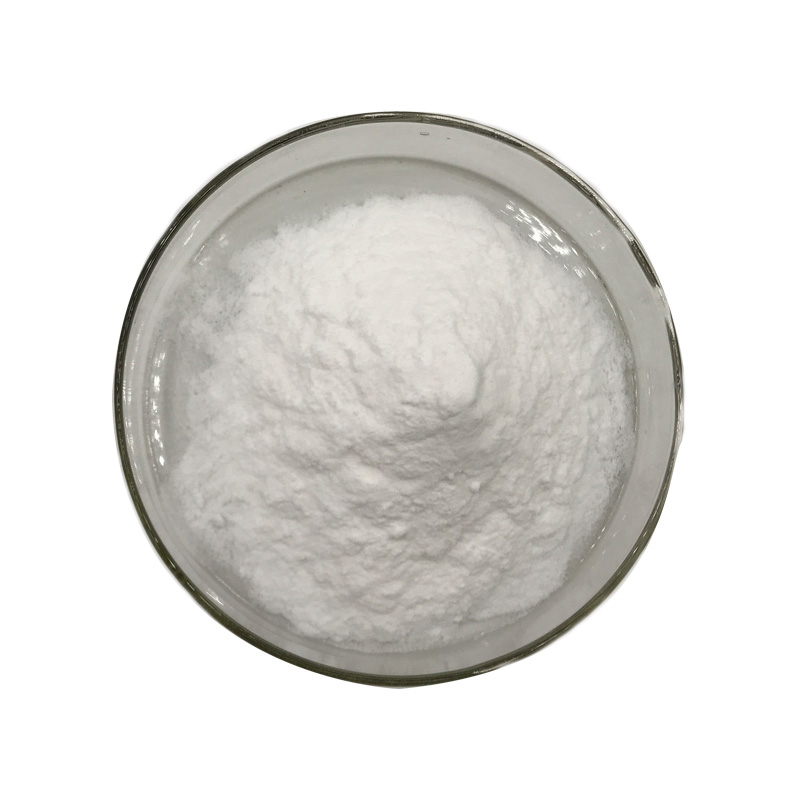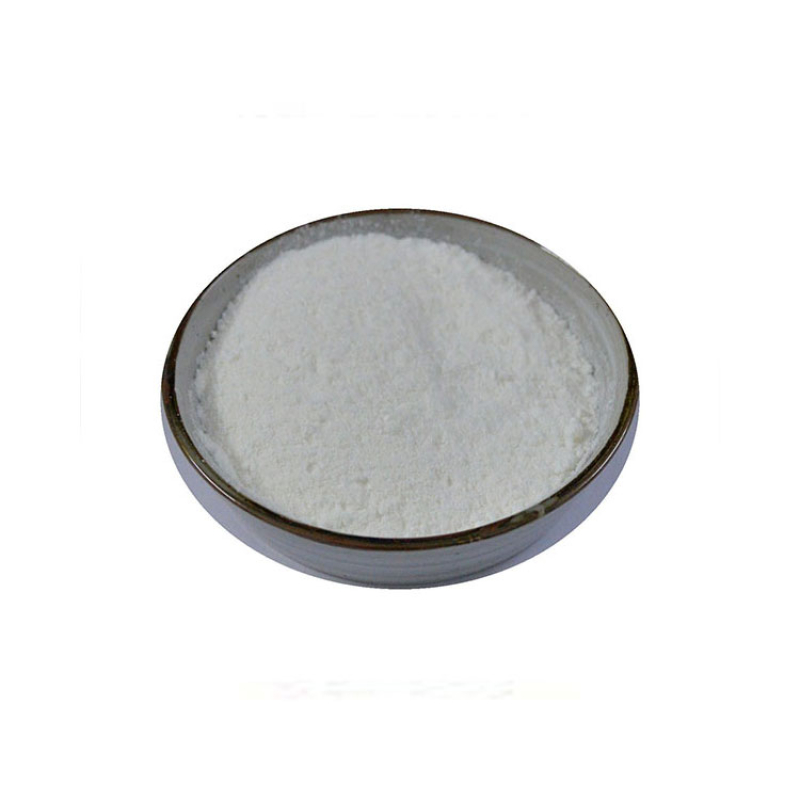Products Description of 1,4-Benzoquinone CAS#106-51-4Parabenzoquinone is a quinone organic compound. Pure parabenzoquinone is a bright yellow crystal with a pungent smell similar to chlorine. Impure samples are often due to 1 :1 charge transfer complex) exists and the color is dim.
Contact Now
Products Description of Ademetionine 1,4-butanedisulfonate CAS#101020-79-5S-Adenosylmethionine 1,4-butanedisulfonate is used to synthesize sulfo-adenosyl-L-methionine (SAMe) salt.Ademetionine 1,4-butanedisulfonate Chemical PropertiesMelting point >48oC (dec.)storage temp. under inert gas (nitrogen or Argon) at 2-8°Csolubility DMSO (Slightly, Heated), Methanol (Slightly), Water (Slightly)form Solidcolor Off-WhiteStability:HygroscopicInChIKeyPVCDYZJGZPCASW-FGEWMKOMNA-MSMILESC(CCCS(O)(=O)=O)S(O)(=O)=O.O[C@@H]1[C@@H]([C@@H](C[S+](C)CC[C@H](N)C(=O)O)O[C@H]1N1C=NC2C(
Contact Now
1,4-Benzenedicarboxylic Acid, Compds. With Polyisobutenyl Succinic Anhydride-Tetraethylenepentamine Reaction Products CAS:68909-40-0Good dispersibility: It can be effectively dispersed in various solvents and matrices, which helps to improve the uniformity and stability of the product. Excellent thermal stability: It can maintain its stable performance at higher temperatures and is suitable for some high-temperature application scenarios.
Contact Now
Products Description of Triethylenediamine CAS#280-57-9Triethylenediamine, also known as 1,4-diazabicyclo〔2.2.2〕octane, or triethylenediamine, abbreviated as DABCO or TEDA in English, has a chemical formula of C6H12N2.
Contact Now
Products Description of 1,4-Butanediol dimethacrylate CAS#2082-81-71,4-Butanediol dimethacrylate is used in the preparation and application of hydrogel super absorbent polymers.1,4-Butanediol dimethacrylate Chemical PropertiesMelting point −117 °C(lit.)Boiling point 132-134 °C/4 mmHg (lit.)density 1.023 g/mL at 25 °C (lit.)vapor density 2.09 (vs air)vapor pressure 430 mm Hg ( 25 °C)refractive index n20/D 1.456(lit.)Fp 38 °Fstorage temp. 2-8°Csolubility Chloroform (Sparingly), Methanol (Slightly)form Liquidpka9.8(at 25℃)color
Contact Now
1,4-Butanediol CAS#110-63-41,4-butanediol (1,4-BD) is a colorless, viscous liquid derived from butane with the aid of placement of alcohol organizations at every give up of its molecular chain and is one of 4 secure isomers of butanediol.the hydroxyl feature of every give up crew of the Butanediol reacts with exceptional mono- and bifunctional reagents: for instance with dicarboxylic acids to polyesters, with diisocyanates to polyurethanes, or with phosgene to polycarbonates.
Contact Now
Products Description of 1,4-Bis-[4-(3-acryloyloxypropyloxy)benzoyloxy]-2-methylbenzeneCAS#174063-87-71,4-Bis-[4-(3-acryloxypropoxy)benzoyloxy]-2-methylbenzene can be used in the field of photography to synthesize fast-erasable dyes, filter materials, charge transfer agents, etc.1,4-Bis-[4-(3-acryloyloxypropyloxy)benzoyloxy]-2-methylbenzene Chemical PropertiesBoiling point 733.5±60.0 °C(Predicted)density 1.219vapor pressure 0.003Pa at 25℃storage temp. Keep in dark place,Sealed in dry,Room Temperatureform powdercolor WhiteWater Solubility 5.3μg/L at 20℃Log
Contact Now
Products Description of Maltose CAS#69-79-4Maltose is the abbreviation of maltobiose, also known as D-maltose and maltose. A disaccharide formed by connecting, condensing, and dehydrating two molecules of α-D-glucose through α-1,4 glycosidic bonds. There is also a free hemiacetal hydroxyl group in the molecule, which is a reducing sugar. Like glucose, it can make Doron's reagent and Fehling's reagent react positively.
Contact Now
Products Description of 2-Amino-3-chloropyrazine CAS#6863-73-62-Chloro-3-aminopyrazine is a chemical.CAS No.
Contact Now
Methylcyclohexane CAS#108-87-2Methylcyclohexane, an alkene, is a colorless liquid with a faint benzene-like odor. The smell thre-shold is 630 ppm (this is above the OEL). Molecularweight = 98.21; Specific gravity (H2O:1)= 0.77; Boilingpoint = 101℃; Freezing/Melting point= - 127℃; Vaporpressure= 37 mmHg at 20℃; Flash point= - 3.9℃ (cc),- 5.9℃ (oc); Autoignition temperature = 258℃. Explosivelimits: LEL= 1.2%; UEL = 6.7%.
Contact Now
Product DetailsProducts Description of Octadecenoic Acid CAS#112-80-1Insoluble in water, soluble in benzene, chloroform, miscible with methanol, ethanol, ether and carbon tetrachloride. Because it contains double bonds, it is easily oxidized by air, producing an unpleasant odor and turning yellow. When treated with nitrogen oxides, nitric acid, mercurous nitrate and sulfurous acid, it can be converted into oleic acid. When hydrogenated, it becomes stearic acid. The double bonds can easily react with halogens to form halogenated stearic acid.
Contact Now
Products Description of Metatitanic acid CAS#12026-28-7Titanic acid is an intermediate product of the sulfuric acid method for producing titanium dioxide.
Contact Now
Products Description of Madecassic acid CAS#18449-41-7Madecassoside (MC) is the main active ingredient of triterpenoid saponins in Centella asiatica Urb., a plant of the Umbelliferae family. Studies have shown that MC has a wide range of pharmacological activities in vivo and in vitro, and can reduce collagen-induced arthritis inflammation, promote the proliferation of human fibroblasts cultured in vitro, treat or prevent hypertrophic scars and keloids, and protect myocardial ischemia-reperfusion injury.
Contact Now
Products Description of Clavulanic acid CAS#58001-44-8Clavulanate Potassium, trade name potassium clavulanate, is an oxopenicillin β-lactamase inhibitor, which is a β-lactam ring and a hydrogenated isoxazole ring.
Contact Now
Products Description of Sodium MethoxideCAS#124-41-4Sodium methoxide is also called sodium methoxide. It is a kind of alcohol salt generated by methanol, with the chemical formula CH3ONa. It is a strong base commonly used in organic synthesis. Sodium methoxide is usually stored as a solution in alcohol solvents such as methanol and ethanol. It dissolves in ether to form a suspension, is sensitive to moisture, and decomposes into methanol and sodium hydroxide when it comes into contact with water: CH3ONa+H2O→CH3OH+NaOH. Sodium methoxide products come in two forms: solid and liquid.
Contact Now
Products Description of Sodium Hydroxide CAS#1310-73-2Sodium hydroxide, also known as caustic soda and caustic soda, has the chemical formula NaOH. It is a highly corrosive strong base, usually in white flakes or granules. It can be mixed with water to form an alkaline solution, and can also be dissolved in methanol and ethanol. This alkaline substance is deliquescent and will absorb water vapor in the air, as well as acidic gases such as carbon dioxide. Sodium hydroxide is one of the commonly used chemicals.
Contact Now
Aluminum Oxide CAS#1344-28-1 The oxide of aluminum is Al2O3. The natural crystalline mineral is called corundum, but the synthetic crystals used for abrasives are designated usually as aluminum oxide or marketed under trade names. For other uses and as a powder, it is generally called alumina.
Contact Now
Products Description of Direct Ferric oxide CAS# 1309-37-1Iron oxides are produced synthetically and consist essentially of anhydrous and/or hydrated iron oxides. The range of hues includesyellows, reds, browns and blacks. Food quality iron oxides are primarily distinguished from technical grades by the comparatively low levels of contamination by other metals. This is achieved by the selection and control of the source of iron and/or by the extent of chemical purification during the manufacturing process.
Contact Now
Products Description of Direct Pigment Yellow 42 CAS#51274-00-1Pigment yellow 42, also known as Yellow Iron oxide is a yellow powder in the form of an alkaline oxide with comparatively stable chemical properties. It is is insoluble in water and alcohol, slightly soluble in acids but completely dissolves in concentrated hydrochloric acid. When heated to 80℃, it loses water and converts to red ferric oxide. It is used in coating, printing ink and paint, and also as a coloring agent for building material, rubber and paper-making.
Contact Now
Products Description of LDAO CAS#1643-20-5This product is colorless or light yellow transparent liquid, with a relative density of 0.98 at 20°C. Easily soluble in water and polar organic solvents, slightly soluble in non-polar organic solvents and showing non-ionic or cationic properties in aqueous solutions. When the pH value is <7, it is cationic. Amine oxide itself is an excellent detergent and can produce stable and rich foam.
Contact Now
Products Description of Dodecylamine CAS#124-22-1Dodecyl primary amine is also known as 1-aminododecane, laurylamine, and dodecylamine. It is colorless or white crystal. This product is weakly alkaline and can form salts with inorganic or organic acids. Can be quaternized. Reacts with ethylene oxide and can be acetylated. Chemicalbook can be added to unsaturated hydrocarbons. This product can be oxidized with peroxide. Reacts with halogenated carboxylic acids to generate amphoteric compounds. Reacts with carboxylic acid chloride to generate amides.
Contact Now
Products Description of 1-Hexadecylpyridinium bromide CAS#140-72-7Cetylpyridinium bromide is a chemical substance with the chemical formula C21H38BrN, the molecular weight is 384.4371, and the EINECS number is 205-428-3.1-Hexadecylpyridinium bromide Chemical PropertiesMelting point 63-69 °Cstorage temp. Inert atmosphere,Room Temperaturesolubility Chloroform,Methanol,Acetone,Ethanol[soluble in]solubility soluble in Chloroform,Methanol,Acetone,Ethanolform powder to crystalcolor White to Almost whiteWater Solubility 5 g/L (20 ºC)BRN 3778948InChIInChI=1
Contact Now
Products Description of Tert-Butyl 1-piperazinecarboxylate CAS#57260-71-6In modern chemical pharmaceuticals, 1-tert-butyloxycarbonylpiperazine plays a very important role because it is an important basic chemical raw material for many antitussive drugs, antiallergic drugs, antipsychotic drugs, antibacterial drugs, various pesticides, etc.
Contact Now
Tert-Butyl Methyl Ether CAS# 1634-04-4Methyl tert-butyl ether (MTBE) is a colorless liquid with a distinctive, unpleasant odor. It is made from mixing chemical substances such as isobutylene and methanol, and has been used considering the fact that the Nineteen Eighties as an additive for unleaded gasolines to obtain extra environment friendly burning.MTBE is additionally used to dissolve gallstones.
Contact Now








![1,4-Bis-[4-(3-acryloyloxypropyloxy)benzoyloxy]-2-methylbenzeneCAS#174063-87-7](https://sdluxicdn.huazhi.cloud/cdn/ff/UzaxHqC7dqMBX0gCNrVwnr0zZlxBJGLCf_1pR8RV7U8/1719438243/public/styles/chanpinzhutu/public/2024-06/%E7%99%BD%E8%89%B2%E7%B2%89%E6%9C%AB%20%285%29_15.jpg?itok=9zTdC24L)

























